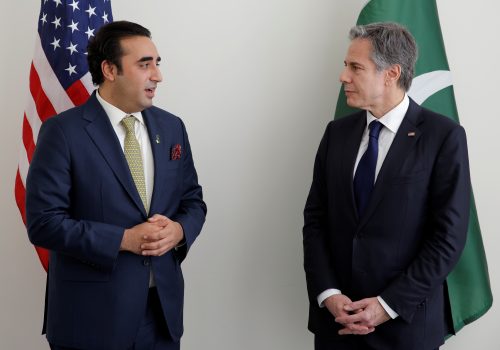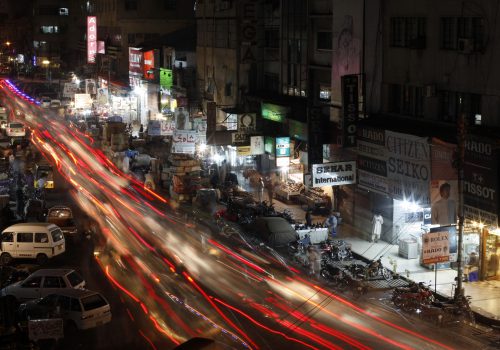Violent, criminal, and terrorist organizations’ functioning and success often rely on the support of the population in which they operate. Terrorist organizations can use violence and terrorist attacks to coerce citizens into their support. This approach may function in the short run but may not be a viable long-term strategy to keep citizens’ support. Some scholars have hypothesized that to gain and maintain this vital support, violent organizations engage in the provision of goods and services.
Examples of such cases include criminal organizations in Latin America that maintain support by providing social services, building roads, maintaining water distribution systems, and handling trash disposal, the Mafia in Southern Italy which gained support by providing security and dispute resolution mechanisms, the Muslim Brotherhood in Egypt, Hezbollah in Lebanon, al-Shabaab in Somalia, and the Islamic State in Syria. In each of these cases, the organization provided many social services to the local population to maintain and gain support.
In our recently published paper in the Journal of Conflict Resolution, we provide causal evidence that violent organizations gain support by providing goods and services in competition with the state. And, that this strategy is only effective when and where there is a weak state. If violent organizations compete with an effective state, they lose support.
Why would terrorist organizations’ provision of public goods have an effect on citizens’ preferences? When citizens have incomplete information about the relative capacity of the state and the violent organization in providing social services, they update their beliefs about this relative capacity by observing the quality of the services delivered by these two organizations. Citizens’ perception of the ability of the state increases if there is a swift provision of public goods. The perception of the ability of the state decreases if there is inadequate provision of public goods, leaving an opportunity for a terrorist organization to show its ability.
We used data from Pakistan to show this evidence and, specifically, the Tehreek-i-Taliban Pakistan (TTP) and the Pakistani state’s effectiveness in the provision of public goods. To ensure that there are no confounding variables that may conflate our estimates, we studied the competition between the state and terrorist organizations in the provision of public goods after two different natural disasters. Both the TTP and the state compete in the provision of natural disaster relief. Furthermore, both the state and the TTP provide food, water, and medicine as immediate relief after natural disasters. In the long run, they are both involved in reconstruction efforts and provide a legal system to resolve disputes—often land-related—that arise after natural disasters. These two organizations compete in the provision of many other services such as education, medical care, and a legal system.
Due to changes in Pakistan’s international relationships, we can study two comparable situations in which the TTP provided services but were met with different state capacities by studying two natural disasters of similar magnitudes. We studied the 2010 floods that instead occurred after the relationship between the United States and Pakistan had deteriorated. With unusually low levels of aid, the government was unable to respond to this natural disaster adequately. We then examined an earthquake in 2005 that struck Pakistan in a period when it was a vital ally to the United States. This led to the arrival of substantial international aid and a swift response from the government.
Similarly, we used two difference-in-differences strategies to measure the effect of 2010 floods for support for the TTP and the effect of the 2005 earthquake on support for the Taliban. We measured support for the TTP using the fact that there is a close relationship between the extreme Islamist political alliance Muttahida Majlis-e-Amal (MMA) and the TTP. That is, we compared changes in the political results of the MMA between areas affected by each natural disaster to areas unaffected by each natural disaster. We found that the MMA vote share increased by 5.1 percent more in areas affected by the flood relative to the unaffected areas. This effect represents a sizable change, given that their average vote share before the flood was 9.8 percent. These effects are stronger in districts where more people were affected by the flood, where the state particularly underdelivered, and where the TTP provided relief. These results represent a change in the beliefs of citizens exposed to the flood about the relative capacity of the state compared to the TTP.
On the other hand, we showed that the 2005 earthquake, a natural disaster of comparable size that received a swift response from the government, led to a 19.4 percent decrease in the MMA vote share relative to areas unaffected by the earthquake. This demonstrates how positive information about state capacity can reduce support for non-state organizations.
These results cannot be explained by alternative explanations such as political competition, voters punishing incumbents for poor management of a natural disaster resulting in political gains for other parties, changes in voter turnout, changes in the number of political parties, or the presence of selective migration out of the affected areas.
Instead, they highlight an important determinant of extremist ideology and support for such groups.
Individuals respond to the way non-state actors and the state provide for them. We demonstrated that the efficiency of the state in a post-natural disaster period can move citizens to and away from a terrorist organization. Future public policy and research should consider the complementarity between government relief efforts and the rise of extremist groups in areas with weak institutions and extremism. With our results, we can provide a back-of-the-envelope calculation on the cost and benefit analysis of international aid as a tool in supporting anti-terrorism efforts. In the 2005 earthquake, around 53 percent of aid was delivered after three months. In contrast, in the 2010 flood, only 27 percent was delivered in the same amount of time. This 26 percent difference in aid delivered amounts to around one billion dollars.
According to our estimates, this shortfall in aid motivated around two million voters to vote for the MMA.
Click here to view the full report, The Charitable Terrorist: State Capacity and the Support for the Pakistani Taliban.
Dr. Federico Masera is a senior lecturer in Economics at the University of New South Wales and at the Resilient Democracy Lab.
Dr. Hasin Yousaf is an applied microeconometrician with interests in political economy and public economics, with additional interest in development economics and urban economics.

The South Asia Center is the hub for the Atlantic Council’s analysis of the political, social, geographical, and cultural diversity of the region. At the intersection of South Asia and its geopolitics, SAC cultivates dialogue to shape policy and forge ties between the region and the global community.
Related content
Image: A soldier stands guard along the border fence outside the Kitton outpost on the border with Afghanistan in North Waziristan, Pakistan October 18, 2017. REUTERS/Caren Firouz



